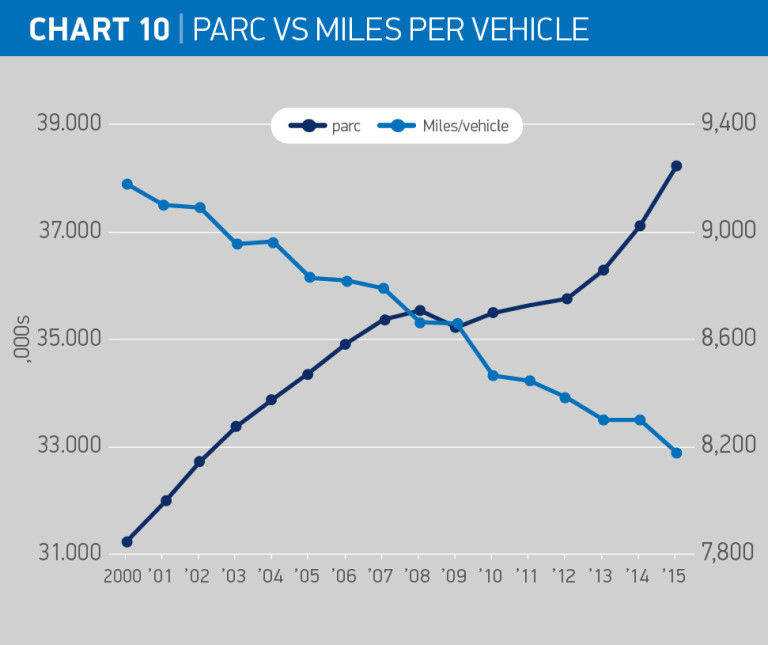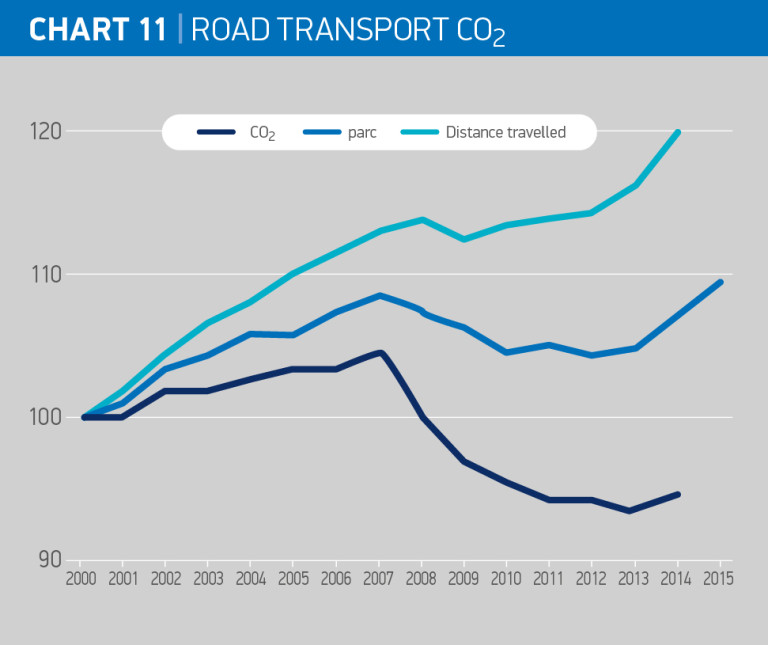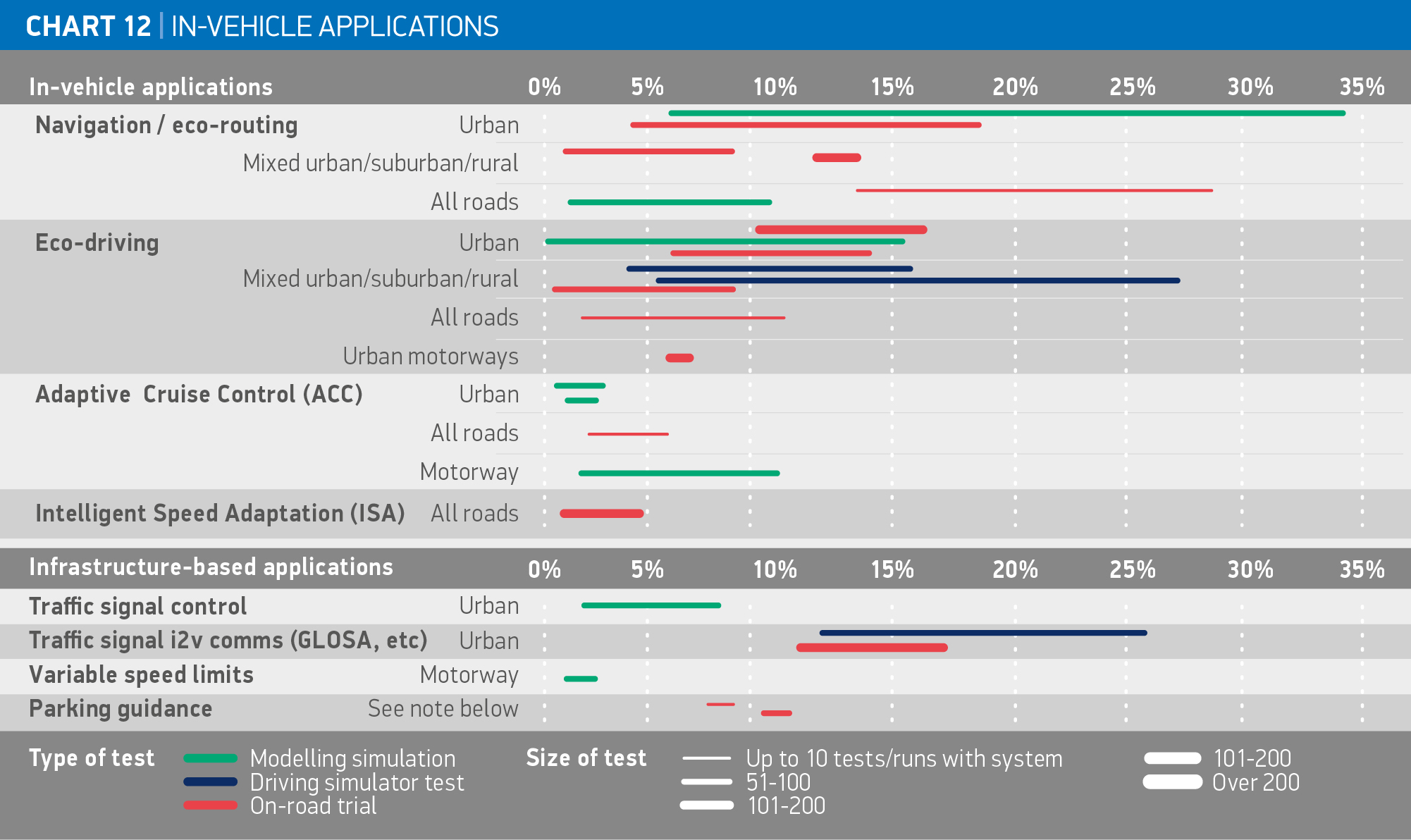These continuous improvements in emissions performance are vital, particularly when the recent rise in vehicle use is taken into account. Growing demand for new cars and vans – and strong uptake of new heavy duty vehicles – saw a 2.4% rise in distance travelled in 2014, but only a 1.3% increase in overall CO2 emissions.
Road transport accounted for 25.6% of total UK CO2 emissions in 2014, with cars representing 16.1%. With significantly more vehicles on the road, and more miles being driven, car CO2 emissions rose by 0.8% in 2014 and those for heavy commercial vehicles (HCVs) rose by 1.3%, while for vans CO2 emissions were up 3.9%. However, significant investment by vehicle manufacturers into reducing emissions means that these increases have been mitigated by reductions in emissions from newer vehicles. Looking longer-term, total CO2 emissions from road transport have fallen by some 9.6% compared with 2007.
SMMT parc (vehicles in use) data for 2015 shows an increase of 22.3% in the number of vehicles on the road between 2000 and 2015. The recent growth in new vehicle demand, coupled with increased longevity of vehicles, has seen a pick-up in the rate of growth in the parc. The rate at which vehicles are scrapped has fallen, and the average age of the vehicle fleet has risen. Chart 10 also shows how distance travelled per vehicle has fallen over time.
While cars account for 83% of all vehicles on the road, and volumes have risen by 20.6% since 2000, the light commercial vehicle (LCV) sector has grown the fastest – up 44.8% in the same period. This has seen the distance travelled by LCVs grow 47.2% since 2000, compared with a more modest 6.4% increase for cars. The recent rise of internet shopping and a growing number of customer deliveries – as well as more stringent operator rules for HCVs – have been integral to the growth in the van fleet.
In 2015, ERTICO – ITS Europe, a partnership of around 100 companies and institutions, published a study into the potential of ‘Intelligent Transport Systems (ITS)’ – which covers both in-vehicle and infrastructure-based connected technologies – to help reduce CO2 emissions from passenger cars with internal combustion engines. Chart 12 shows a snapshot of possible CO2 reduction of in-vehicle and infrastructure applications of existing ITS measures. It highlights in particular the role of route planning and driver education.











